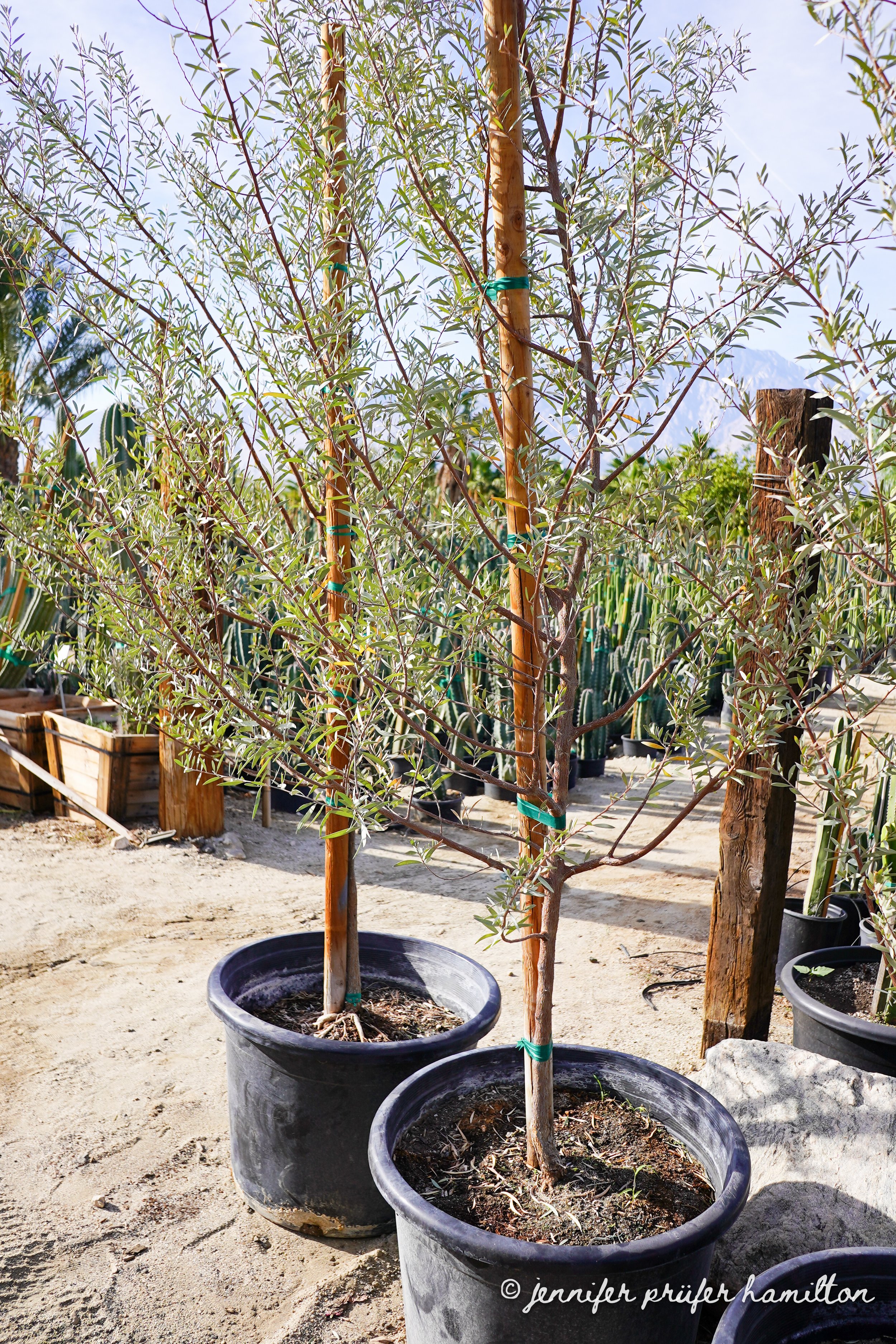Mulga Acacia Tree
Mulga acacia is a common tree in its native habit, western Australia. Adapted to survive the tough hot and dry outback, it can take on harsh conditions in the American Southwest as well.
It has a graceful and informal appearance, with its rounded, open growth habit and long, silvery green leaves.
This is one fine tree that tolerates desert conditions and blends well with other plants in any arid landscape.
Botanical name: Acacia aneura
Other names: Mulga tree
Mulga acacia for sale at the nursery
TABLE OF CONTENTS
Mulga acacia Appearance
Mulga acacia is a small to a medium-sized tree that reaches 25 feet in height with a 15 feet spread in our region. In its native habitat in Australia, some are twice as large.
Upright growth habit. Easily trainable trunk and branches that are dark brown and thornless.
Evergreen leaves are grey-green, similar to that of olive trees. Small and narrow leaves grow in an alternate pattern.
Deep and extensive roots that allow the tree to be drought-tolerant. They are nitrogen-fixers as well, so they are tolerant of nutrition-poor soils.
Bloom season is typically from spring to summer. Attractive, small, bright yellow flowers.
Followed by dark-colored seed pods.
Mulga acacia Landscaping Tips
Adds bright color to the garden during bloom season with its bright, yellow flowers. Attracts pollinators such as butterflies and bees.
Tolerant of drought, heat, and poor soil. Very low maintenance and resilient.
Provides filtered shade. It can be used to protect smaller shrubs that cannot take the direct full sun in the desert.
The seeds are used by Aboriginals in Australia to create flour. They are also consumed by livestock.
It can be a large shrub if left untouched. To have a tree-like appearance, prune younger trees to develop a single trunk. We recommend doing the heavy pruning in early spring in the Palm Springs region. Less pruning is required once mature.
Mulga acacia Origin
Mulga acacia is from warm and dry regions in western Australia
Mulga acacia Care
Soil: Loose, well draining soil.
Temperature: Can withstand temperatures down to 20 degrees for a short period of time.
Water: Drought tolerant once mature. Occasional, deep watering. For new and young trees, water more often.
Sun: Full sun
Mulga acacia Problems
Pests: Mulga acacia has minimal pests. Fungal diseases from root rot, dry rot, and harsh weather conditions. Make sure that the Mulga acacia tree does not get overwatered.
Signs of overwatering: Drooping, squishy texture, weak branch growth, leaf drop
Signs of too little water: Leaf discoloration, leaf drop
Signs of too much sun: Burning, scarring, fading color
Signs of too little sun: Etiolation, discoloring
Mulga acacia Propagation
Once the Mulga acacia seed pods are dark and ripe, collect the seeds and plant in moist soil.
FAQ
How much does a Mulga acacia tree cost?
At our nursery, a Mulga acacia tree costs $35 for a 5-gallon container, $120 for a 15-gallon container, $250 for a 24-inch box, $750 for a 36-inch box, and $2,500 for a 48-inch box.
Prices are subject to change. Please contact us for the most up-to-date information on pricing. We may have larger sizes available. We provide installation services locally at a separate cost.
Are mulga acacias messy?
Mulga acacias shed lots of leaves and bean pods. We do not recommend placing it near a swimming pool for this reason. We do recommend placing it in a desert landscape with poor soil, because it will help build nutrients with its leaf litter and nitrogen-fixing abilities.
How fast does Mulga acacia grow?
Mulga acacias grow somewhat slowly in our region, usually one foot a year.
Summary
| SIZE (H X W) | 25 feet x 15 feet |
|---|---|
| FLOWER COLOR | Yellow |
| FLOWER SEASON | Spring to Fall |
| EXPOSURE | Full Sun |
| WATER | Low |
| GROWTH RATE | Slow |
| HARDINESS | 20º F, USDA Zone 8 |
| PRUNING | As needed |


